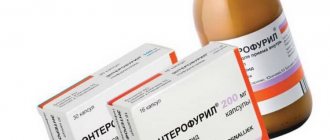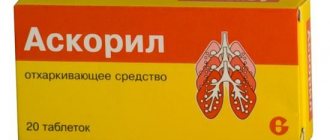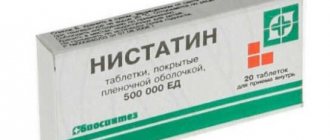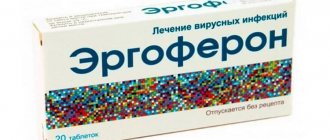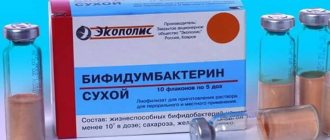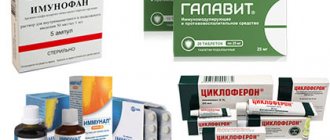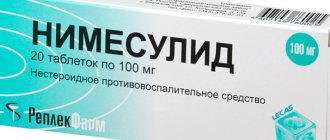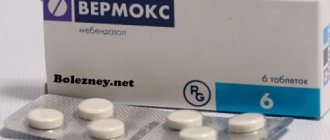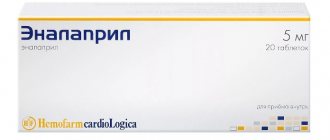Broad-spectrum antibiotics act as the main group of drugs prescribed for colds, viral or infectious diseases in humans. Thanks to antibiotics, further development of the disease is prevented; in some cases, these drugs help stop the disease during the incubation period.
Particularly popular, as well as having corresponding medicinal properties, are antimicrobial drugs with bactericidal action belonging to the group of fluoroquinolones. These drugs include Ciprofloxacin, intended for intravenous injections. The drug has repeatedly proven its effectiveness, which has earned it popularity among patients. It is necessary to review the instructions for intravenous use in order to know the features of the drug, its contraindications, possible side effects and spectrum of action.
Release form and composition
Ciprofloxacin is available in several forms, but the most effective form of release is considered to be an injection solution. An intravenous injection allows the active substance hydrochloride monohydrate to quickly disperse throughout the patient’s body and influence the source of inflammation.
Let's consider the main features of the release form, as well as the composition of the drug:
- Ciprofloxacin is produced in the form of a solution for infusion in 100-milliliter bottles. As a rule, one package contains from 5 to 10 bottles of solution, it all depends on the manufacturer;
- The liquid is colorless or has a slightly yellow tint. Very important: the solution should not be cloudy or oily; if you see such a liquid in the bottle, it is a fake or expired product. Beware of such products;
- The main active ingredient is ciprofloxacin (hydrochloride monohydrate). Per 100 ml – 2 mg;
- Additional components include lactic acid, sodium, ethylenediaminetetraacetic acid and water for injections.
As you can see, the drug has a specific composition, which does not contain active chemical additives that negatively affect the patient’s health. The active ingredients react quickly; after 30-40 minutes you can feel the first results.
Possible complications
Ideally, there should be no special reactions at the injection site.
When the drug is injected into a vein, the injection site will look as if blood was taken from the patient - a small, not very painful bruise from blue to yellowish may form.
When the drug is injected into a muscle, a barely noticeable bruise may also form at the injection site. There is no redness or scarring left during injection.
a small lump may form at the injection site . This means that the drug was administered too quickly or that there was too much of it. If the seal resolves over time, then there is nothing to worry about. To speed up healing, you can apply an iodine mesh to the seal.
Pharmacological properties
Ciprofloxacin is a broad-spectrum antimicrobial antibiotic. Thanks to the quinolone derivatives that form the basis of this medicine, the total destruction of harmful microorganisms occurs, which leads to a significant inhibition of the further development of the disease and a speedy recovery of the patient.
It is worth noting that the drug affects microbes that are in the stage of anabiosis or division, which allows not only to cure the current disease, but also to prevent a relapse or the emergence of a new source of inflammation due to weakened human immune defense.
The active substances of Ciprofloxacin are non-toxic, which makes it possible to simultaneously combine antibiotic drugs of two different types and specificity of action. When taking the drug, resistance to other antibiotics or other medications does not develop. The simultaneous use of Ciprofloxan and other antibiotics that are not included in the group of DNA gyrase inhibitors is allowed. This makes it possible to increase the intensity of damage to harmful bacteria that are resistant to the action of quinolone derivatives.
According to medical statistics, after a full therapeutic course of Ciprofloxacin, the chance of relapse is extremely small. The drug affects 95% of harmful microorganisms; for the remaining 5%, an unfavorable environment is created in which they cannot divide.
Pharmacokinetics
As for pharmacokinetics, the drug quickly interacts with the body. The end products of metabolism are metabolized in the liver and ultimately excreted in feces and urine. It is worth noting in advance that the uncharacteristic color of urine during a therapeutic course of Ciprofloxacin is only a side effect and does not signal a violation.
The active substances of the drug are evenly distributed throughout the body through blood circulation. It is worth noting that the medication leaves the blood only after 24-36 hours.
When performing an intravenous injection, interaction with the body occurs within 50-60 minutes, which is quite fast compared to other drugs.
As noted earlier, drugs are excreted along with excrement, as well as through urine. The final concentration of Ciprofloxacin in the urine exceeds the norm by 50-60 times, at which all harmful bacteria that lead destructive activities in the urethra die. Thus, a kind of prevention of the urinary canal, in particular the bladder and urethra, is performed.
Important. Ciprofloxacin is not intended for intramuscular injections.
Indications for use
Ciprofloxacin is prescribed to children and adults for acute viral or infectious lesions. As a rule, children are prescribed a form of release in the form of tablets, but in emergency situations requiring urgent medical intervention, the child is prescribed injections for intravenous use.
Indications for use for adults are as follows:
- Diseases of the bronchi (bronchitis), lesions of the respiratory tract of varying severity;
- Infectious diseases of the ears, oral cavity (otitis media, pharyngitis, sinusitis, etc.);
- Lesions of the urinary tract and renal system;
- Infectious and viral diseases of the genitourinary system. It is worth noting that Ciprofloxacin is used to prevent and eliminate the risk factor for relapse of male sexually transmitted diseases;
- Lesions of the digestive tract, the presence of intraperitoneal infection;
- Severe infectious manifestations on the skin (ulcers, purulent neoplasms, etc.);
- The drug is used for the treatment and prevention of diseases of the bone structure and joints. Doctors strongly recommend Ciprofloxacin for intravenous use in people over 60 years of age;
- As a preventive measure and speedy recovery of the patient after a surgical procedure;
- Mild form of anthrax (for intensive care in acute form);
- To naturally stimulate the restoration of a person’s immune defense, as a result of its weakening after a long course of other medications.
Ciprofloxacin: can it be given to children?
The drug Ciprofloxacin can be prescribed to children, but only after they reach 5 years of age . At an earlier age, antibiotics are not prescribed or are prescribed with extreme caution and are used under the supervision of a doctor. The drug is effective in the following cases :
- pneumonia, other diseases of the lower respiratory tract;
- otitis, sinusitis and other ENT diseases;
- pyelonephritis, cystitis;
- intestinal infections;
- peritonitis;
- anthrax;
- sepsis;
- comprehensive treatment of tuberculosis;
- infections of bones and skin.
For infections of the mucous membrane of the eye, eye drops are prescribed. The drug may cause some side effects, so it is not prescribed if the bacterial infection is mild .
As for the treatment of tuberculosis in children, experts advise starting therapy with Ciprofloxacin only from the age of 15 . The drug is used as a third or fourth line drug, i.e. it is an auxiliary medication in the treatment of this disease.
Reference. Ciprofloxacin is prescribed to children mainly for primary and miliary tuberculosis .
Contraindications
The drug has undergone appropriate medical examinations and testing and is absolutely safe for the patient’s health. However, there are a number of absolute and relative contraindications that must be observed in order to eliminate the risk factor of causing serious harm to the patient’s health.
The list of absolute contraindications includes:
- It is strictly forbidden to inject Ciprofloxacin and take Tizanidine at the same time. With such a combination of medications, hypotension occurs, followed by a transition to a chronic form, malaise and weakness appear;
- It is strictly forbidden to take the drug for intravenous administration to pregnant women, as well as during breastfeeding;
- It is not allowed to give injections to children under 5 years of age. If possible, it is not recommended to use the product until adulthood, with the exception of the treatment of anthrax;
- Individual intolerance to the active substances of the drug, allergic reaction to fluoroquinolone and its derivatives;
- It is not recommended to take the medication for people suffering from acute heart disease and who have suffered an ischemic stroke or myocardial infarction.
Important. All contraindications given above are classified as restrictions that cannot be violated. Otherwise, complications may occur or side effects of the drug may appear.
Relative contraindications (which can be circumvented or eliminated) include:
- For atherosclerotic plaques;
- In case of circulatory disorders in the lymph;
- It is necessary to treat diseases of a psycho-emotional nature with caution;
- People over 70 years of age (with the exception of cases when an elderly person is not allergic to medications and does not have acute chronic diseases);
- Any heart rhythm disturbances (arrhythmia, bradycardia).
In case of relative contraindications, it is also not recommended to use it, but in case of urgent need, the attending physician may authorize intravenous injection, provided that this action does not harm the patient’s health.
Respiratory fluoroquinolones are the most effective antibiotics for pneumonia
Antibiotics from the fluoroquinolone group are very often used in medicine. A special subgroup of these drugs has been created, which is especially active against pathogens of respiratory tract infections. These are respiratory fluoroquinolones:
- levofloxacin (Ashlev, Glevo, Ivacin, Lebel, Levoximed, Levolet R, Levostar, Levotek, Levoflox, Levofloxabol, Leobeg, Leflobakt Forte, Lefoksin, Maklevo, Od-Levox, Remedia, Signicef, Tavanik, Tanflomed, Flexid, Floracid, Hyleflox, Ecolevid, Eleflox);
- moxifloxacin (Avelox, Aquamox, Alvelon-MF, Megaflox, Moximac, Moxin, Moxispenser, Plevilox, Simoflox, Ultramox, Hynemox).
These antibiotics act on most pathogens of bronchopulmonary diseases. They are available in tablet form and also for intravenous use. These drugs are prescribed once a day for acute sinusitis, exacerbation of bronchitis or community-acquired pneumonia, but only if other drugs are ineffective. This is due to the need to maintain the sensitivity of microorganisms to powerful antibiotics, without “shooting sparrows with a cannon.”
These drugs are highly effective, but their list of possible side effects is more extensive:
- candidiasis;
- inhibition of hematopoiesis, anemia, bleeding;
- skin rash and itching;
- increased blood lipid levels;
- anxiety, agitation;
- dizziness, sensory disturbances, headache;
- deterioration of vision and hearing;
- heart rhythm disturbances;
- nausea, diarrhea, vomiting, abdominal pain;
- pain in muscles and joints;
- decreased blood pressure;
- swelling;
- convulsions and others.
Respiratory fluoroquinolones should not be used in patients with prolongation of the QT interval on the ECG, which may cause life-threatening arrhythmias. Other contraindications:
- previous treatment with quinolones that caused tendon damage;
- rare pulse, shortness of breath, edema, previous arrhythmias with clinical manifestations;
- simultaneous use of drugs that prolong the QT interval (this is indicated in the instructions for use of such a drug);
- low potassium content in the blood (prolonged vomiting, diarrhea, taking large doses of diuretics);
- severe liver disease;
- lactose or glucose-galactose intolerance;
- pregnancy, breastfeeding period, children under 18 years of age;
- individual intolerance.
Instructions for use of Ciprofloxacin
A very important part is the instructions for use. Proper calculation of the dosage will allow you to avoid the negative consequences associated with an overdose, as well as eliminate the risk factor of improper use of the drug. The solution for infusion is used in the following way:
- The medicine is injected into a vein through a dropper. In some cases, an injection is allowed provided that the patient does not have an acute allergic reaction to the active substance of the medication;
- From 50 to 200 ml of solution is administered intravenously, depending on the severity of the disease and the individual characteristics of the patient. Ciprofloxacin is mixed with sodium chloride, Ringer's solution and dextrose solution. Other components are selected by the attending physician on an individual basis. After the medicine is ready for use, it is necessary to use it as directed within half an hour to prevent loss of sterile properties;
- If the drug is administered intravenously through a syringe, then take 10 ml of Ciprofloxacin and 5 ml of a special solution;
- If the patient has allergic reactions to certain solutions used to install the IV, the attending physician selects similar products.
It is worth noting in advance that the independent use of Ciprofloxacin is strictly prohibited. The medicine is injected (or administered) exclusively in a medical facility.
Analogues of the drug
Ciprofloxacin is an effective antibiotic that can affect a wide variety of diseases. The drug is used in the treatment of tuberculosis in children, but only as an auxiliary component in complex treatment. This drug belongs to the group of fluoroquinolones, so it can be replaced with analogue drugs included in the same group.
Photo 3. Packages of Levofloxacin in the form of tablets with a dosage of 250 and 500 mg. .
In the treatment of tuberculosis in children, the drug Levofloxacin , which is a second-line drug in the treatment of the disease, can be used. Similar tablets are used : Lekhim, Tsifran, suspension Ofloxacin, Tsiprolet, Tinidazole and powder for preparing a solution that is administered intravenously and intramuscularly - Promed . Therapy for the disease is long, so you need to be mentally prepared for the fact that treatment will take from one to two years .
Dosage
Let's consider what is the optimal dosage regimen for the medication recommended for adults:
- In case of infection of the respiratory tract, the drug is administered several times a day, 350-400 ml;
- For lesions of the urinary tract, Ciprofloxacin is used exclusively by drip. Place 150 ml twice a day. In case of exacerbations or severe forms of the disease - several times a day with the same dosage;
- For bronchial lesions - 2 times a day, 400 ml;
- All other diseases noted in the list of “Indications for use” are prescribed with a basic dosage of 200 ml several times a day.
The general dosage does not apply to children from 5 to 14 years of age, as well as elderly people over 70 years of age. The dosage is adjusted by the attending physician and calculated based on the individual characteristics of the patient’s body. For general infectious lesions, it is recommended to reduce the dosage to eliminate the risk factor of drug overdose.
The therapeutic course lasts from 7 to 21 days. After seven days, a comprehensive diagnosis is carried out, which includes laboratory tests and instrumental diagnostics.
If the patient shows improvement, the therapeutic course is suspended and further treatment is carried out with conventional antibiotic drugs. Provided there is no obvious improvement in the patient’s condition, the therapeutic course is extended for another seven days.
Tablets for intestinal inflammation
To know what to do and which medications will best help with intestinal inflammation, several factors should be taken into account: the type of inflammation, localization in the intestine, stage of the disease, individual characteristics of the body. The parameters for choosing medications are determined by the types of intestinal inflammation - ulcerative colitis and Crohn's disease. The causes of these diseases are also important for selecting a therapeutic regimen: infection, immunity problems, heredity and even stress.
- 1 Treatment rules
- 2 Types of medications for intestinal inflammation 2.1 Anti-inflammatory drugs
- 2.2 Anti-inflammatory tablets
- 2.3 Immunomodulators
- 2.4 Antibiotics and antifungals
- 2.5 Aminosalicylates
- 2.6 Antidiarrheals
- 2.7 Corticosteroids
- 2.8 Restoring microflora
- 2.9 Homeopathy for inflammation
Treatment rules
When the intestines are inflamed, loss of appetite, abdominal pain or upset bowel movements are noticed. These are the main symptoms. A white coating on the tongue should alert you. Under no circumstances should you treat intestinal inflammation on your own. In order for treatment to lead to a positive result, first of all, it is necessary to change your lifestyle and diet. Stop smoking and alcohol, maintain fluid balance. Don't overload your body with excessive exercise. Avoid stressful situations, take antidepressants if necessary. The main condition is compliance with the diet.
Return to contents
Types of medications for intestinal inflammation
Medicines against intestinal inflammation are divided into pharmacological groups according to the type of effect. These medications, which relieve inflammation and accompanying pain, are taken alone or in combination with others, depending on the state of health. Their list is impressive, the main ones are indicated:
- immunomodulators;
- antibiotics and antifungals;
- aminosalicylates;
- antidiarrheal;
- corticosteroids.
Return to contents
Anti-inflammatory drugs
Correct identification of the disease is the first step towards cure. Only a doctor should select medications, as they have many side effects. Interactions with other medications must be taken into account. They allow you to quickly relieve symptoms, alleviate and improve the general condition of the patient, for example, “Salofalk”, which relieves symptoms. It comes in the form of granules, suppositories or enema. Indicated for Crohn's disease and ulcerative colitis. For children with inflammation, Rektodelt suppositories are prescribed.
Return to contents
Anti-inflammatory tablets
Inflammation is also successfully treated with tablets. The most common one is “Mezavant”. Such drugs have a local effect on the intestinal epithelium during inflammation. "Salozinal" is an anti-inflammatory and antibacterial drug. It is used for Crohn's disease or colitis, as well as for their prevention. Sulfasalazine has a similar effect. To prevent the intestines from becoming inflamed again, maintenance therapy is prescribed up to 500 mg of Sulfasalazine per day.
Return to contents
Immunomodulators
Immunomodulators are prescribed as additional therapy for long-term inflammatory processes. They are designed to balance the functioning of the immune system. This could be “Immunal”, which is prescribed for chronic inflammation and weakening of the body’s resistance. "Viferon" is prescribed for intestinal infections of unknown etiology. A synthetic product can be replaced with a natural one - echinacea, eleutherococcus. These alcohol tinctures are sold in pharmacies. For adults, it is recommended to take 30-40 drops at a time. As for children, consultation with a gastroenterologist and immunologist is necessary.
Return to contents
Antibiotics and antifungals
Antibiotic therapy should be under the supervision of a physician.
Antibiotics are prescribed to treat inflammation caused by bacteria. "Ciprofloxacin" is prescribed for infections of the gastrointestinal tract, including those caused by salmonella. Phthalazol is an antimicrobial agent that also has an anti-inflammatory effect. "Levomycetin" is used for infections of the abdominal cavity, including peritonitis or typhoid fever. If necessary, an antifungal agent is used. Often - "Nystatin", which is used when a fungal infection occurs during long-term therapy with antibacterial medications. Drug treatment does not involve the frequent use of antibiotics, since they destroy harmful microflora along with beneficial ones.
Return to contents
Aminosalicylates
Amiosalicylates are a group of drugs that are prescribed for stable remission of the disease while taking corticosteroids. They control symptoms and can be prescribed in the postoperative period. Aminosalicylates are used to maintain well-being in mild cases of Crohn's disease and ulcerative colitis. Aminosalicylic acid is used in limited quantities, so the dosage is prescribed by a specialist.
Return to contents
Antidiarrheal
Diarrhea is a short-term disorder. However, it may indicate an intestinal infection. Antidiarrheal medications are designed to normalize stools in the shortest possible time. Nifuroxazide, Loperamide, Imodium (the active ingredient is loperamide) have this property. A fairly large number of medications are produced based on this substance and are used for diarrhea.
Return to contents
Corticosteroids
If signs of exacerbation of the inflammatory disease appear, then corticosteroids are prescribed - medications with a short-term effect. Methylprednisolone and Hydrocortisone are used intravenously in the hospital. If the patient is treated at home, then corticosteroids are prescribed in tablet form or in the form of rectal suppositories. The drugs of choice are Prednisone, Budesonide, Dexamethasone. These medications have many side effects. Used for nonspecific ulcerative colitis and Crohn's disease.
Return to contents
Restoring microflora
Normal intestinal microflora is the key to health.
Intestinal microflora is the main indicator of the health of the gastrointestinal tract. It can be destroyed by antibiotics, so to restore it, medications are prescribed in parallel that can populate the intestines with healthy microflora. Medicines of this type are divided into prebiotics and probiotics. Prebiotics are substances that are incapable of digestion, but they serve as the basis for the proliferation of bacteria (Lactusan, Prelax). Probiotics are live cultures of bacteria that are needed in the intestines (Bifidumbacterin, Linex).
Return to contents
Side effects
Ciprofloxacin is recognized as an absolutely safe broad-spectrum antibiotic, but, unfortunately, has a number of side effects. They appear in patients with incompatibility with the drug or violation of established contraindications.
It is important to know what side effects there may be in order to stop injections in a timely manner:
- Disorders in the gastrointestinal tract. Vomiting occurs and appetite may decrease. If these effects are present, injections must be stopped immediately;
- Serious side effects are deviations in the nervous system, expressed by chronic migraines, fainting or fainting, heavy, morally unpleasant dreams, lack of proper sleep (deviation from the norm is considered to be from 2 to 4 hours of sleep per day). In especially severe cases, there is a depressed moral state, stress occurs, possibly sharp aggressive behavior, temporary hallucinations;
- Imbalance in the five basic senses. Different tastes and aromas are felt, vision deteriorates (short-term color blindness is possible), there are extraneous sounds or noises in the ears;
- Particularly dangerous side effects are problems with the cardiovascular system. As soon as these deviations occur, it is necessary to urgently stop Ciprofloxacin injections and postpone the continuation of the therapeutic course to a more appropriate time. Abnormalities in the functioning of the heart include irregularities in rhythm, hypotension (due to abnormalities in the cardiovascular system);
- With a long therapeutic course, due to an excess of active substances in the liver, the enzymes responsible for neutralizing foreign elements in the human body may increase;
- Problems arise with the urinary tract, there are disturbances in the renal structure;
- If the drug is abused, arthritis may worsen and tendon mobility may be impaired.
Important. Children have slightly different side effects. As a rule, this is an extensive allergic reaction to the active substance - ciprofloxacin, manifested in the form of a rash on the body and severe itching of the skin.
Children develop hypersensitivity, and their vision is greatly affected by bright colors. In the worst cases, there is swelling of the larynx, which can lead to respiratory arrest. If these side effects occur, you must promptly contact a medical facility to eliminate the risk factor for serious consequences.
Ciprofloxacin: side effects, analogs, cost and reviews
Despite the wide range of antimicrobial activity, pronounced effect on the body, and an extensive list of indications, the drug rarely causes side effects.
More often than others, doctors note:
- nausea, in isolated cases - vomiting, loss of appetite;
- dizziness, headaches;
- allergic reactions;
- tachycardia, shortness of breath.
With parenteral administration, pain may appear at the site of the IV, slight swelling, and phlebitis.
Of the Ciprfloxacin analogues that have the same spectrum of antimicrobial activity, the doctor may recommend:
- Quintor (India);
- Inficipro (India);
- Tseprova (India);
- Tsiprinol and prolonged form Tsiprinol SR (Slovenia);
- Ziprobay (Germany);
- Cifran (India).
Koroshkin Petr Vasilievich, physician - therapist. “I rarely prescribe ciprofloxacin. However, this is not due to the low effectiveness of the drug, but rather, on the contrary, to a wide spectrum of antimicrobial activity. I prescribe it to patients with particularly resistant forms of infection. The drug helps quickly and rarely causes complications.”
Andrey, 38 years old. “The doctor prescribed Ciprofloxacin when I was diagnosed with gonorrhea. Considering my condition, it was hard to believe that just one tablet would help. But really, it was enough for the symptoms of the disease to quickly disappear.”
Ciprofloxacin, whose side effects are quite rare and the list of contraindications is quite small, is an effective antibiotic that is used to treat various infections. The most affordable is the domestic drug (the cost ranges from 40-50 rubles). But foreign analogues are also not very affordable, for example, the Israeli Ciprofloxacin Teva costs about 130 rubles for 10 tablets of 0.5 g.
Is it possible to overdose?
Unfortunately, if this drug is abused, an overdose is possible. Since the active substances have a strong therapeutic effect, they have a huge impact on the body, as a result of which there are disturbances in the functioning of the digestive tract, there may be loose stools (in some cases constipation), vomiting, and deviations in the psycho-emotional state of the patient. What to do in this case?
According to general medical statistics for patients undergoing a therapeutic course with Ciprofloxacin, there were no cases of overdose. Because of this situation, a specific antidote was not found. If an overdose occurs, the first step is to induce vomiting and perform gastric lavage. Next, call an ambulance and provide the victim with the proper amount of fluid. Warm or cool boiled water is required.
A dangerous amount per day is considered to be 800-1000 ml of the drug per adult and 400-500 for a child.
In some situations, when there is a threat to human life, attending physicians administer a dosage close to the dangerous limit, but cases of overdose have not been recorded. To exclude unforeseen circumstances, it is enough to contact your treating specialist and undergo a full consultation.
Therapeutic effect
The main active component of Ciprofloxacin tablets belongs to the antibacterial agents of the fluoroquinolone group. It has a bactericidal effect, leading to the death of sensitive bacteria. This effect is realized by suppressing the catalytic activity of the bacterial cell enzyme DNA gyrase. This leads to disruption of the DNA replication (doubling) process and death of the bacterial cell. The drug has sufficient activity against active (dividing) and inactive bacterial cells. It has a bactericidal effect against a significant number of gram-positive (staphylococci, streptococci) and gram-negative (Escherichia coli, Pseudomonas aeruginosa, Proteus, Klebsiella, Yersinia, Salmonella, Shigella, gonococci) bacteria. The drug also leads to the death of specific bacteria that are intracellular parasites (mycobacterium tuberculosis, legionella, mycoplasma, ureaplasma, chlamydia). The activity of Ciprofloxacin tablets against Treponema pallidum (the causative agent of syphilis) remains unclear.
After taking the Ciprofloxacin tablet orally, the active ingredient is well absorbed into the systemic circulation and is evenly distributed in the tissues, where it has a therapeutic effect.
Special measures
Additional instructions allow you to vary the situation and anticipate unfavorable developments before they occur. Let's consider the main criteria that must be taken into account when undergoing a therapeutic course with Ciprofloxacin:
- The medicine is not intended for the treatment of infectious pneumonia. The active substance will eliminate general symptoms, but will not have a serious effect on harmful microorganisms;
- It is strictly forbidden to exceed the established daily dosage of the drug. If such a need arises, you should take as much fluid as possible to avoid disturbances in the water-salt balance;
- If acute pain in the tendons occurs, it is necessary to interrupt the therapeutic course. Fluoroquinolones have a rather aggressive effect on ruptured tendons. If there is an inflammatory reaction, the session should be suspended for a while;
- During the therapeutic course of Ciprofloxacin, it is recommended to avoid exposure to the sun. It is strictly forbidden to visit solariums;
- If the therapeutic course lasts more than two to three weeks, laboratory tests of blood and urine should be performed every three days to monitor the situation;
- When the first psycho-emotional deviations appear, you must immediately stop the injection session. It is strictly forbidden to combine Ciprofloxacin with antidepressants.
Shelf life
The medicine should be stored in a dark place free from ultraviolet radiation at a temperature of 18 degrees. The shelf life of the injection solution is two years from the date of production indicated on the back of the package.
WE ADVISE YOU TO READ:
Guide to using Amoxiclav for injections
Previous article
Essentiale in injections: indications and rules of use
Next article
Discussion: there is 1 comment
- Natalia:
02/07/2019 at 12:12good for prostatitis. My husband drank for a week and then only completed his treatment with Omnic and Smartprost. there were no symptoms by that time

